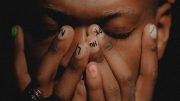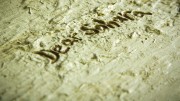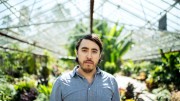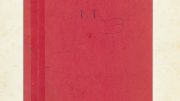I still don’t know how it happened. What began as an observation between friends, that the 2010 Lollapalooza line-up was pretty great, somehow evolved into looking up cheap hotel rooms and booking time off of work. Before I knew it I was on a plane, and then on a train, and then in the middle of a crowd thousands deep in Chicago watching Devo.
I feel I should preface this by saying I have never been to a music festival, not even Folk Fest. I tend to go to average size shows in average size venues where I can sit down and not have to worry that my only average height will work against me in a standing-room-only situation. What’s more, I am not a fan of the outdoors. Something about bugs and unpredictable weather makes me greatly prefer having a roof over my head while I support the arts. It speaks either to the quality of the line-up or my own self-delusion that I thought this whole “massive outdoor festival” thing would work with my sensibilities.
The headliners were, in fact, enough of a draw to spur a weekend trip to the “Windy City”: Lady Gaga, Phoenix, Arcade Fire, Green Day, and a newly reformed Soundgarden. For everyone wondering how Lady Gaga fits in with those acts, I will say that Lollapalooza is a fairly eclectic event. Smaller acts on the side stages (130 of them in all) ranged from Canadian bands Stars and Metric to Japanese metal band X Japan and Australian electro-pop duo Empire of the Sun. Besides the low likelihood that all the bands going to be there would someday find themselves in Winnipeg, and the combined ticket prices if even a fraction of them do, going to Lollapalooza was a sound financial decision, if not a great one.
For the totally unaware, Lollapalooza is a music festival created in 1991 by Jane’s Addiction singer Perry Farrell. As far as festivals go, it used to be a bigger deal than it is now, but even if it didn’t fade into obscurity before being revived in 2005 some people still wouldn’t know what it is. Part of the problem is that Lollapalooza doesn’t have a defining moment in its history. It is not pop culture legendary like Woodstock ‘69, and never had a year marred by violence like Woodstock ‘99. Most people will only know it as the festival parodied by The Simpsons in its seventh season episode “Homerpalooza” which guest starred The Smashing Pumpkins, Sonic Youth and Cypress Hill, backed by the London Symphony Orchestra.
As a festival, Lollapalooza also lacks a defining image. It is not Coachella, with as many celebrities in the crowd as there are on stage, or Glastonbury, where showing up without Wellington boots will make you stick out like a sore thumb. The most you can say about Lollapalooza is that during its glory days in the 1990s it was known for showcasing alternative rock music, like the aforementioned Smashing Pumpkins in 1994, but this is no longer true. Indie rock is now a major draw, but featuring it does not make the festival unique. If anything does that anymore, it is its setting.
It began by touring North America in 1991, but was cancelled in 1997 as alternative rock’s popularity waned. Since 2005, Lollapalooza has been an urban event. The festival’s new and stationary three-day format calls Chicago’s Grant Park home. Bordered by Lake Michigan to the east and office towers to the west, the park was also the site of Barack Obama’s election night victory speech in 2008. As the kind of person who would rather do just about anything else than go camping, an urban festival was right up my alley. My friend and I stayed in a hotel just off of Michigan Avenue, right downtown and a short 15-minute walk away. No need for a tent or bug spray, just a love of big city amenities.
Day 1
When we walked in the main gates on Friday afternoon, I thought I was prepared for how many people there would be. Final counts put the three-day attendance at 240, 000 and from what I saw the crowd was mostly college age kids, some already wearing band tees with others showing their hipster cred in floral patterned rompers and straw hats. On a sartorial scale I judged them harshly, but when the sun came out I envied their foresight, if not their style. As I sweated to Devo, the first act we came to see (yes, they wore those plastic hats), I pined for Winnipeg’s dry heat and not the humid mess I found myself in.
Lollapalooza’s website billed it as a primarily vertical festival, one that I convinced myself I had been preparing for by working so many years in retail. By the time we made our way to the stage where the Dirty Projectors were playing all we wanted to do was sit down and drink lots of water, and that’s exactly what we did. I couldn’t see the band, but I could hear them, and that was good enough. That justification would come up again at various times over the weekend: during Grizzly Bears’ set, nearly while watching The xx (while I didn’t pass out, the guy in front of me almost did through some combination of drugs and dehydration), and yet again during Yeasayer and Mumford & Sons. When the sun set behind the buildings, the temperature finally became bearable but anytime before then I gripped my water bottle for dear life.
Hours later we made our way to the big stage to see the much-hyped Lady Gaga, along with everyone else in the park. Suddenly the college kids were joined by youngsters with their parents, middle aged adults and anyone who may have been curious about the show. Some were dressed up as Gaga, others looked ready to go a club instead of an outdoor concert. We found seats to the right of the stage, quite far back, and watched Montreal-based duo Chromeo while waiting for the real show to start.
It was a toss-up between going to see Lady Gaga and The Strokes, who were performing across the park. Lady Gaga ultimately won because we felt the odds were better of The Strokes touring through Winnipeg one day — and because it’s Lady Gaga. With her reputation, something crazy would happen and we’d be fools to miss the opportunity to see it live. Indeed, fools we found ourselves, but not for that reason.
I admit I’m only an occasional Gaga fan. I know her singles, and I read excerpts of her interviews on blogs. I was not one of the people that camped out in front of the stage hours before to get a good seat. For those people, I’m sure they had a good time. But for us in the back, who couldn’t hear the cheering, and everyone else who started to leave even before the half-way point, something was just a little off to make the show consistently enjoyable. The start was slow, with songs we didn’t know. She addressed her fans (her “little monsters”) too often and too awkwardly. When she started playing piano, albeit well, the mood died like a junior high dance when a slow-song comes on. She saved “Bad Romance” until last but by then it was too little, too late.
The concert seemed deeply cathartic for Gaga, who performed at Lollapalooza three years earlier at a side stage. She wore the same bra she did at the first show, to remind herself as much as the audience of how far she’s come, and brought on her former stage-mate Lady Starlight for a dance break to Metallica’s “Metal Militia” (it was as weird as it sounds). Gaga also thanked her fans profusely for their support and said that she was going to be brave for them. Honestly, had I been younger I would have appreciated her message more. She preached acceptance, confessed she used to be made fun of in school, and explained that she created the Monster’s Ball so that her fans would have a place to go and fit in. These are all things she has said in interviews before, and they are welcome coming from a pop star with so much publicity. But her occasional fans, like me, came to see her sing and be entertained.
When she put her energy into that instead of acting, she was great. But it did leave me regretting not going to see The Strokes. We went back to the hotel that night simultaneously disappointed because we fell for the hype but ready to fall for more.
Day 2
On Saturday we walked up to find a small group of protestors gathered just outside the main gates yelling that rock n’ roll would send us concertgoers to hell, with one man wearing a sandwich board reading “Repent or Perish.” I found this ironic at the time partially because Lady Gaga made it a point the night before to scream out “Jesus loves everybody” while writhing in her fishnets, and partially because the protestors would not stick around to see Arcade Fire’s performance on Sunday night. But I’ll get to that part later.
We chose Saturday to spend time at Perry’s, the stage on the festival grounds devoted exclusively to electronica. On any other weekend the area it occupied would be secluded and peaceful, but the strobe lights destroyed that impression thoroughly. It was nothing short of an outdoor nightclub in between a grove of immense trees. Wires ran through the branches to supply power to the speakers and the incredibly bright screen, and the mass of people dancing underneath them were having the time of their lives. I’ve never been the partying type, but the sight made me want to jump recklessly into the crowd to get a contact high. Instead I watched from the sidelines in an area littered with beer cans, cigarette butts and confetti.
The headliners that night were Green Day and a currently hip French band called Phoenix. Having lost respect for the former after the release of American Idiot (I won’t get into it here) the choice was obvious. Phoenix was playing a smaller stage across the park and they had very little to lose by playing second-fiddle. I knew their music to be light and catchy as hell, or in other words, perfect to dance to during a summer in the city, and dance I did.
Phoenix’s setlist primarily consisted of songs off their breakout album (but actually their fourth) Wolfgang Amadeus Phoenix. Unlike Gaga on Friday night, the band hardly talked at all and played their songs in such close concession that cheering was cut off by new guitar riffs.
There was never any time for the mood to die. And the best part of the night came once the tall guy in front of me got a little too drunk and decided to sit down; my view opened right up as Thomas Mars jumped into the crowd and sang “1901” on a microphone with a super-long, illuminated red cord. The ante had unexpectedly been upped with one day in the festival left to go.
Day 3
The day began with a brief respite from the incredibly oppressive heat in the form of a welcome rainstorm. If foresight hadn’t made me pack booty shorts and a bikini top in my luggage, like it had for so many others, then at least it had made me buy an incredibly unflattering rain poncho at the dollar store the day before I left Winnipeg. The only thing that made it less embarrassing to wear in public was the fact that the crowds were a little thinner that morning. That’s also the only explanation for how we ended up third row from the stage at The Antler’s show.
Did you know these charming indie rockers existed? I sure didn’t, but I’m glad I do now. They draped their instruments with white flowers and crooned to the crowd as we stood huddling together in plastic sheets. It was incredibly cozy and I think I may have swooned at lead singer Peter Silberman. Then the show had to end and the sun had the audacity to come out again. My water bottle comforted me as best it could.
The original plans for the day included going to see festival veterans Cypress Hill, with the single goal of hearing them play “Insane in the Brain” and thereby relive the 90s. But alas, it was not to be. A bad combination of standing directly in the path of fans leaving the Wolfmother show and not having enough patience to last longer than three songs meant I would just have to watch “Homerpalooza” again to feel nostalgic for my childhood. I confess that I was also distracted at the immediate prospect of seeing that night’s headliner, which was the band I had primarily made the trip for.
I first saw Arcade Fire in the fall of 2005 when they were touring for their debut album “Funeral.” Back then, they set their stage with floor lamps so it would look like a living room, and it felt as intimate as a show attended by 1600 people at the Burton Cummings Theatre could. Five years later, the size of the audience and magnitude of the spectacle may have changed, but I was glad that the feeling of intimacy did not.
What I remember most from their Winnipeg show was the audience singing along with the band so loudly that lead singer Win Butler’s voice could barely be heard. At Lollapalooza, that did not change. Standing in a crowd of thousands, with pipe organs audible in the background as the band played “Intervention” off their second album, Neon Bible, was as much of a religious experience as church ever was for me growing up. It was the same way as the crowd swayed to “Crown of Love” and chanted during “Wake Up,” the band’s encore both times I saw them. For those protestors who said that the experience of Lollapalooza would send me to hell, well, I hope those people feel the same way in church as I did that night. And if they do, they should spend more time there instead of outside festival gates on a hot summer day.
When the headliners finished their sets each night at around 10 p.m., tens of thousands of people spilled into the streets, where cops were already stationed and directing traffic. Fans of Arcade Fire were just as triumphant as fans of Soundgarden on Sunday night, and there was camaraderie in the air as the festival came to a close and cheers rose up. The skyline was bright and the mood was celebratory. I understood then that a moment like that is why people go to festivals in the first place.
As I waited in O’Hare airport on Monday afternoon, I decided that the experience was definitely worth forfeiting my personal space and the sunburns I had sustained. For my first festival I went big and then I went home. And I’d be right back there among those 240,000 people again in a second.




